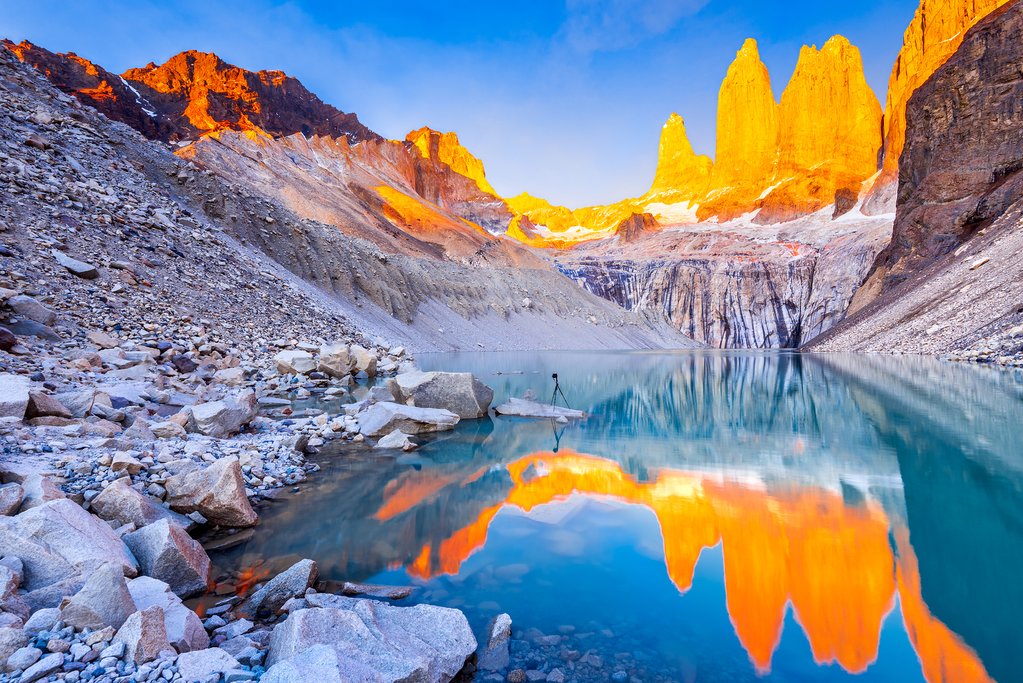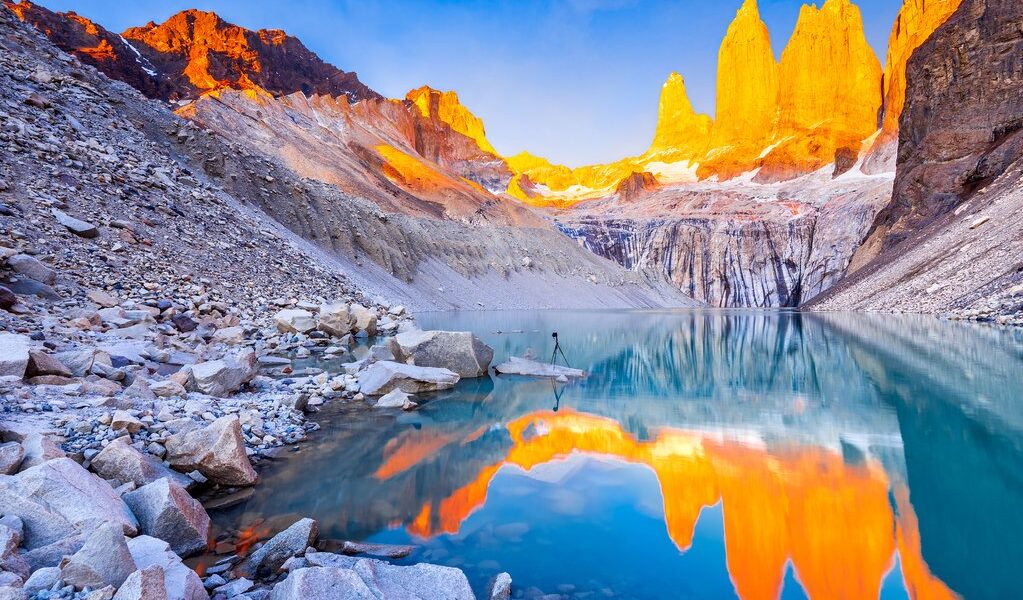
October in Patagonia is the heart of spring and prime shoulder season—a great time to visit the region’s most popular spots before peak crowds arrive. Hint: This is a favorite month for savvy travelers in the know. Read on to learn more.
Patagonia in October: A Comprehensive Guide to Spring Travel
October marks the beginning of early spring in Patagonia, making it a potentially rewarding time to visit, especially as you venture further north. However, the weather patterns across this vast region can vary significantly. Southern Patagonia experiences a delayed spring, with daily high temperatures lingering in the low 50s throughout the month. Despite the cooler temperatures in the south, travelers will notice a welcome decrease in rainfall and an increase in daylight hours, providing more opportunities to explore the stunning landscapes.
Regardless of your chosen destination within Patagonia, it’s essential to pack plenty of warm layers to combat the chilly evenings that descend after sunset and the ever-present Chilean winds. Patagonia is known for its unpredictable weather, and it’s not uncommon to experience a multitude of seasons within a single day. This can range from sunshine and warmth to rain, wind, and even the occasional dusting of snow. Along with the unpredictable weather, you will be able to witness the beauty of the wildflower blooms in Chile’s Lakes District this month. Some travelers even time their visits specifically to coincide with these displays of natural color.
One of the key advantages of traveling to Patagonia in October, and also in November, is the opportunity to avoid the overwhelming crowds and inflated prices associated with the peak summer months. October falls within the pre-summer shoulder season, striking a balance between manageable crowds and reasonable costs in most popular areas. While the weather may be slightly cooler compared to the summer months, the reward is a more tranquil experience, away from the throngs of international tourists. Accommodation prices are also generally lower during this period, making it a more budget-friendly option. Despite the reduced crowds, it’s still advisable to make your reservations at least three months in advance to secure your preferred lodging and tours.
As the winter months fade into spring, many of the services and accommodations that closed for the off-season are reopening their doors, offering travelers a wider range of options. When planning your spring adventure in Patagonia, one landmark to consider is the granite peaks in Chile’s Torres del Paine National Park. These iconic peaks rise dramatically from the surrounding plains, located north of the main town, Punta Arenas. This national park is a must-see destination for avid hikers, wildlife enthusiasts, and anyone seeking awe-inspiring views. The park’s diverse landscapes offer a range of trails, from leisurely strolls to challenging multi-day treks, each providing unique perspectives of the park’s natural beauty.
Beyond Chile, Argentina’s Northern Patagonia offers its own unique attractions. Bariloche bursts into life with spring blossoms, painting the landscapes in vibrant colors. Meanwhile, Peninsula Valdes becomes a haven for whale watching, providing visitors with the opportunity to witness these majestic creatures in their natural habitat. For those who don’t mind braving cooler temperatures, Los Glaciares National Park is a must-visit destination. Here, you can embark on unforgettable hikes near the iconic Mt. Fitz Roy and marvel at the sheer scale of massive glaciers like Perito Moreno.
Patagonia is an adventure playground. By mid-spring, the region offers a wealth of outdoor activities. The spectacular Andes mountain range provides a stunning backdrop for some of the best hiking and biking trails in South America, catering to all levels of experience and ability. At this time of year, it’s generally recommended to focus on the northern part of the region, particularly the Lakes District, where the wildflowers are in full bloom, creating a kaleidoscope of colors across the landscape.
In southern Patagonia, spring arrives later. It might be best to postpone multi-day treks in Torres del Paine National Park and Los Glaciares National Park until the following month. However, those who are well-prepared with the necessary gear and clothing will be rewarded with a more secluded experience, allowing them to appreciate the glaciers, famous peaks, and abundant wildlife without the distraction of large crowds.
Throughout October, Patagonia comes alive with a series of local events and festivals, celebrating the region’s culture and traditions.
Oktoberfest celebrations take place in Puerto Varas and Valdivia, bringing a taste of German culture to Patagonia. These annual German-themed festivals feature live music, traditional attire, and plenty of beer. A similar celebration is also held in Malloco, located just outside of Santiago.
In Argentina’s Trelew, the Penguin Provincial Festival is celebrated each October. This festival features a range of cultural and recreational activities, official events, parades, and the election of the festival queen.
Bariloche a la Carta is a weeklong food festival that showcases the best culinary offerings of the Lake District. Dozens of restaurants participate, creating special menus for the event, while numerous food stalls and microbreweries set up shop in the main square, offering a tantalizing array of flavors and aromas.
The city of Ushuaia hosts the annual Festival Internacional de Ushuaia each October, bringing classical music to the southernmost city in the world.
Considering a trip to Patagonia in October? Here are some itinerary ideas:
The Wonders of Chilean Patagonia tour. This 10-day tour combines Chile’s most picturesque attractions with a balance of relaxation and physical activity. Beginning in the cosmopolitan capital, the journey continues to a lakeside village, adorned with a snowcapped volcano, before heading south to Patagonia. A highlight of the tour is the “W Trek” in Torres del Paine, renowned as one of the most scenic national parks in the world.
The Hiking in Patagonia tour begins in Argentina’s Los Glaciares National Park, home to 13 glaciers and the iconic Mt. Fitz Roy. The adventure continues in Chile’s Torres del Paine National Park, offering more breathtaking peaks, turquoise lakes, and the chance to spot rare wildlife. The tour concludes back in Argentina, with coastal trails and a visit to the world’s southernmost city.
B-2012

